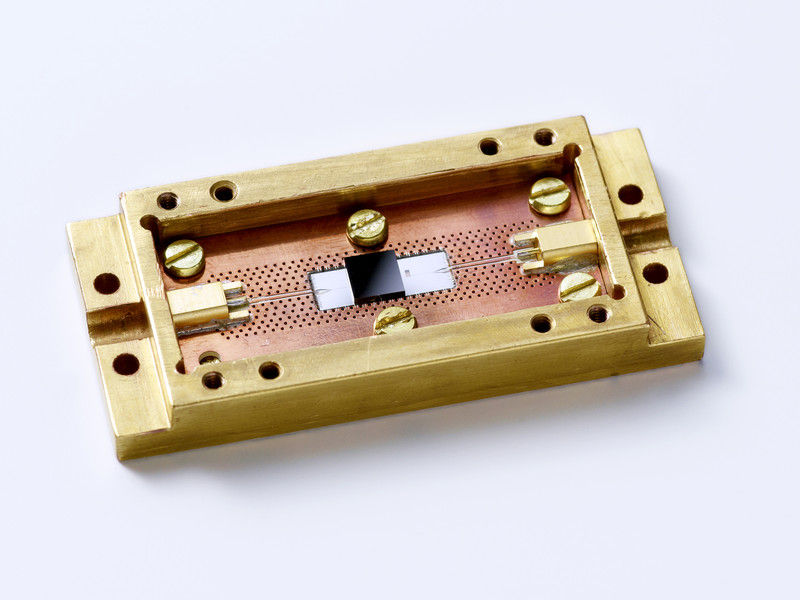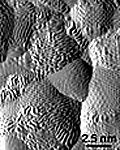"Cavity Protection Effect" Helps to Conserve Quantum Information
Coupling atomic spins in diamonds to microwave resonators could lead to new quantum technologies. Researchers at the Vienna University of Technology (TU Wien) have now managed to dramatically prolong the time these systems can store information.

The quantum system studied at TU Wien (Vienna): A black diamond (center) contains nitrogen atoms, which are coupled to a microwave resonator.
Copyright: Dieter Brasch für Terra Mater Magazin
The electronics we use for our computers only knows two different states: zero or one. Quantum systems on the other hand can be in different states at once, they can store a superposition of “zero” and “one”. This phenomenon could be used to build ultrafast quantum computers, but there are several technological obstacles that have to be overcome first. The biggest problem is that quantum states are quickly destroyed due to interactions with the environment. At TU Wien (Vienna), scientists have now succeeded in using a protection effect to enhance the stability of a particularly promising quantum system.
A Quantum Computer Made of Two Systems
There are various concepts for possible quantum computers. “What we use is a hybrid system of two completely different quantum technologies”, says Johannes Majer. Together with his team, he couples microwaves and atoms, investigating and building a new type of quantum memory. The theorists Dmitry Krimer and Stefan Rotter developed a theoretical model describing the complex dynamics in such hybrid quantum systems.
In a microwave resonator, photons are created. They interact with the spin of nitrogen atoms, which are built into a diamond. The microwave resonator can be used to quickly transport quantum information. The atomic spins in the diamond can store it – at least for a period of several hundred nanoseconds, which is long compared to the time scale on which photons move in the microwave resonator.
“All nitrogen atoms are completely identical. But when they are placed in slightly different surroundings, they have slightly different transition frequencies”, says Stefan Putz, PhD-student at Vienna University of Technology. The atomic spins behave like a room full of pendulum clocks. Initially they may oscillate in sync, but as they can never be precisely identical, they eventually lose their rhythm, creating random noise.
Coupling Causes Order
“By creating a strong coupling between the atomic spins and the resonator, it is possible to dramatically prolong the time during which the spins oscillate in strict time – if their energy levels obey the right distribution”, says Dmitry Krimer. The atomic spins do not directly interact with each other, but the mere fact that they are collectively coupled to the microwave resonator prevents them from changing into a state in which they cannot be used for processing quantum information any longer. This protection effect considerably enhances the duration in which quantum information can be read out from the atomic spins.
“Improving the quantum coherence time with this cavity protection effect opens up many promising applications for our hybrid quantum system”, says Johannes Majer.
Original publication
Other news from the department science

Get the chemical industry in your inbox
From now on, don't miss a thing: Our newsletter for the chemical industry, analytics, lab technology and process engineering brings you up to date every Tuesday and Thursday. The latest industry news, product highlights and innovations - compact and easy to understand in your inbox. Researched by us so you don't have to.









![[Fe]-hydrogenase catalysis visualized using para-hydrogen-enhanced nuclear magnetic resonance spectroscopy](https://img.chemie.de/Portal/News/675fd46b9b54f_sBuG8s4sS.png?tr=w-712,h-534,cm-extract,x-0,y-16:n-xl)














































